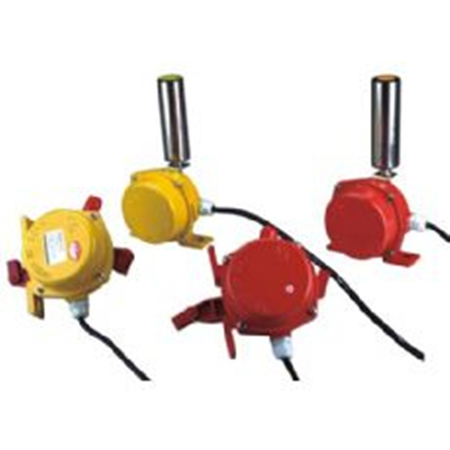
1. Product Overview
The two-stage deviation switch TYPP-10-45 is a device specifically designed to monitor and correct conveyor belt deviation. It has a two-level adjustment function, which can intervene at different levels according to the degree of deviation of the conveyor belt. This switch is designed to be sturdy and durable, suitable for various industrial environments.
2. Main features
3. Technical parameters
4. Working principle
When the conveyor belt deviates, the sensor will detect the deviation and trigger the corresponding level based on the deviation angle:
5. Installation and commissioning
6. Maintenance and upkeep
7. Safety precautions
For more detailed information or technical support, please refer to the product manual or contact the supplier.
1. What is the main function of the two-stage deviation switch TYPP-10-45?
The main function of the two-stage deviation switch TYPP-10-45 is to detect the deviation of the conveyor belt and intervene in two stages based on the deviation angle. When the offset angle reaches 10 °, the switch emits the first level alarm signal; When the offset angle reaches 45 °, the switch emits a second level alarm signal, usually initiating shutdown or stronger adjustment measures.
2. What are the technical parameters of TYPP-10-45 deviation switch?
The technical parameters of TYPP-10-45 deviation switch include working voltage of AC 220V/380V, working current of 10A, contact form of one open one closed (SPDT), adjustment angle of 10 ° (first level) and 45 ° (second level), ambient temperature range of -20 ° C to+60 ° C, and protection level of IP65.
3. How to install and maintain the two-stage deviation switch TYPP-10-45?
During installation, fix the switch on the brackets on both sides of the conveyor belt to ensure that the sensor can accurately detect the offset of the conveyor belt. Connect the switch correctly to the control system according to the wiring diagram in the product manual. After installation, debug and simulate the deviation of the conveyor belt, check whether the switch can accurately send signals and trigger corresponding control measures. In terms of maintenance, it includes regularly checking the operation of the switch, cleaning the sensor surface, preventing dust and foreign objects from affecting detection accuracy, and conducting regular functional tests.